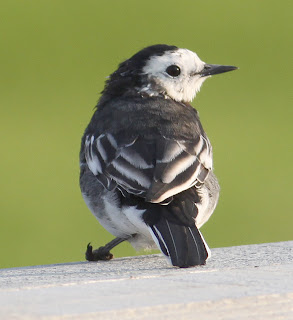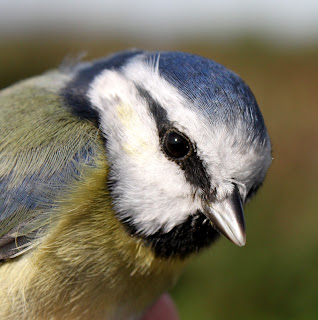This morning there were spits of rain on the conservatory roof. But optimistic as ever I headed to Out Rawcliffe for another solitary ringing session and hopes of a decent catch. On the moss it wasn’t quite raining, just very cloudy, so I put up three nets and kept fingers crossed for early morning migrants.
Meanwhile just a mile or so away at Nateby a birder I know had found a longer distant migrant, a Solitary Sandpiper which had traveled a bit further than any Meadow Pipits I might catch. It’s not my photograph of Solitary Sandpiper, and it’s a number of years since I saw lots of them in pre-digital camera Canada. Thanks to Dario Sanches for the picture taken in Brazil, the country where the Solitary Sandpiper should be right now.

Drizzle came in fits and starts but within an hour I had to abandon ship having caught just 6 birds, 3 Meadow Pipit, 1 Chaffinch, 1 Goldfinch and 1 Goldcrest. The pipits were on the move this morning, coming in from the west and north-west then heading off south and I counted 60+ in the hour. Meadow Pipits may have been still on the go from yesterday’s huge movement but Chaffinches were not, with less than 20 birds perhaps due to visible cloud cloud to the north that would impede their progress.


But now for a more disturbing topic about birds. I saw Colin the gamekeeper this morning who gave me yet another ring taken from a dead Greenfinch in his St Michael’s garden, the third casualty in recent weeks; this latest bird was picked up from directly under the garden feeder. I have emailed the BTO with the information as it is another ringer’s set of rings.

It is sad to see our Greenfinches or indeed any wild bird dying in this way, but since summer 2005, trichomonosis, a disease caused by a microscopic parasite has been reported in finches in gardens. Since then, outbreaks have been seen every year during the late summer and autumn. Greenfinch populations have been recorded dropping by a third, and Chaffinch populations by a fifth in those parts of the country that suffer the most serious outbreaks, Because of the lack of Greenfinches locally it appears that the North West of the UK and the Fylde may be one of the seriously affected areas. Chaffinches appear to visit gardens less than Greenfinches around here, a fact which may have spared their local population from suffering the same fate as Greenfinches.

The trichomonad parasite lives in the upper digestive tract of the bird, and its actions progressively block the bird’s throat, making it unable to swallow food and the bird dies from starvation. Also, birds with the disease show signs of general illness, for example lethargy and fluffed-up plumage, but affected birds may also drool saliva, regurgitate food, have difficulty in swallowing or show laboured breathing.
Transmission of infection between birds happens when they feed one another with regurgitated food during the breeding season, and through food or drinking water contaminated with recently regurgitated saliva. If trichomonosis is suspected, it is recommended to temporarily stop putting out food, and leave bird baths dry until sick or dead birds are no longer found in the garden. This discourages birds from congregating together, which although a natural enough phenomena may actually increase the potential for the disease to spread between individuals.

Good hygiene practice, specifically the regular cleaning of all feeders, bird baths and feeding surfaces, is an essential part of looking after garden birds and will help to lower the risk to birds of diseases in general.



















































.jpeg)




.jpg)













